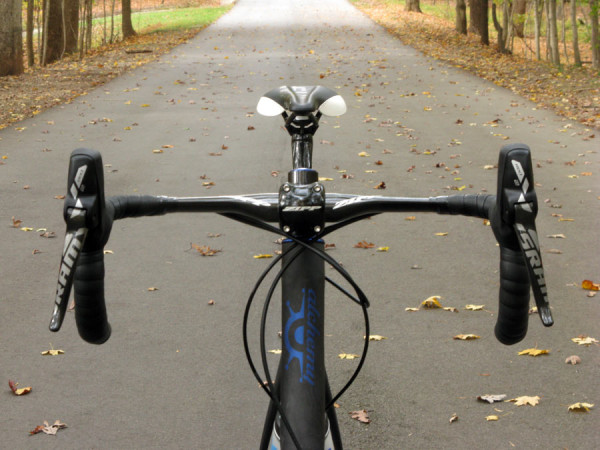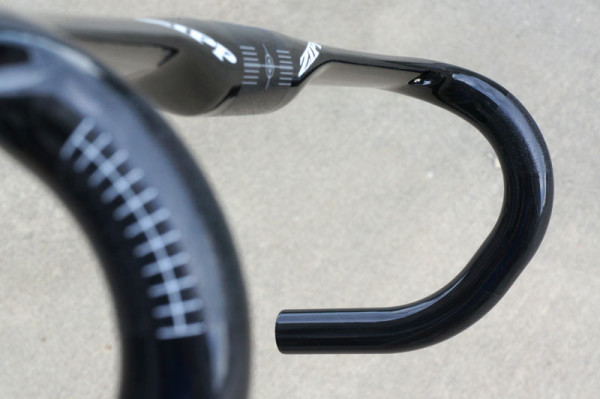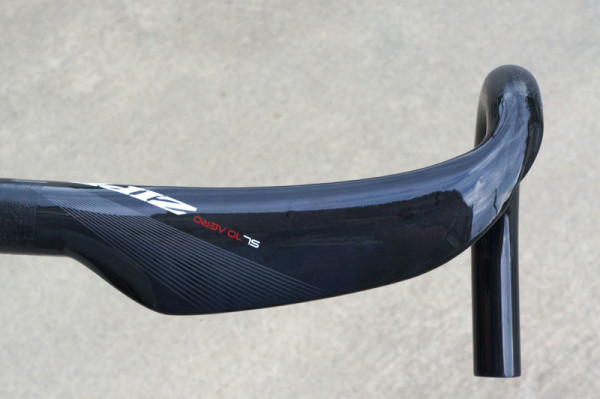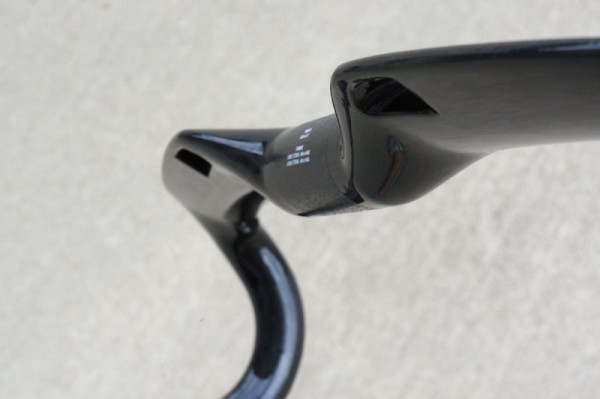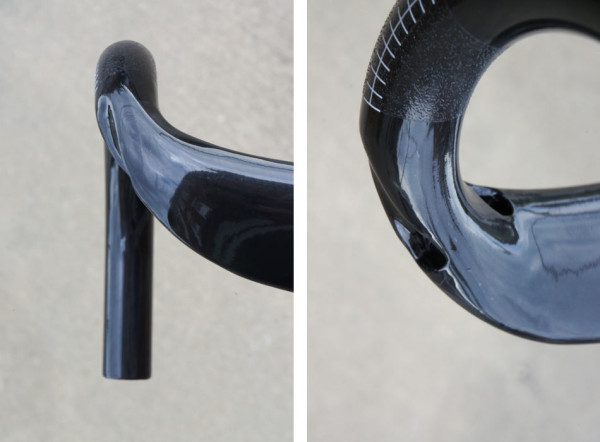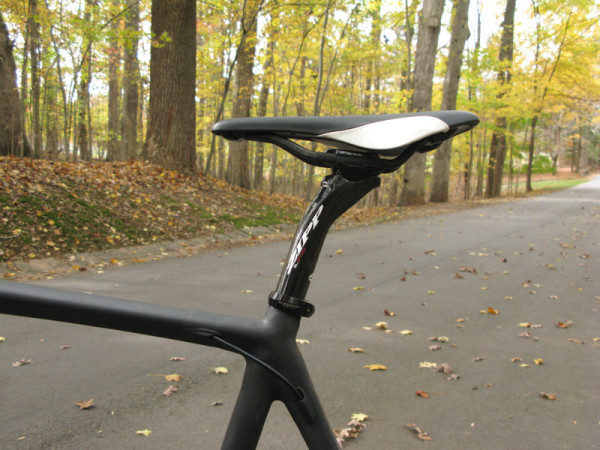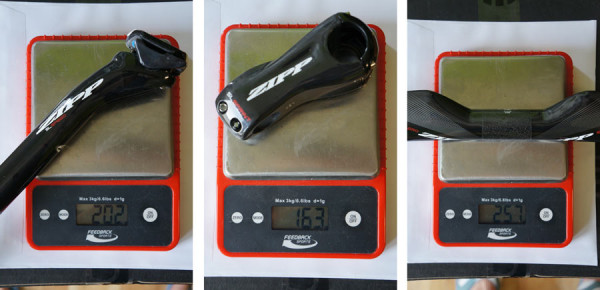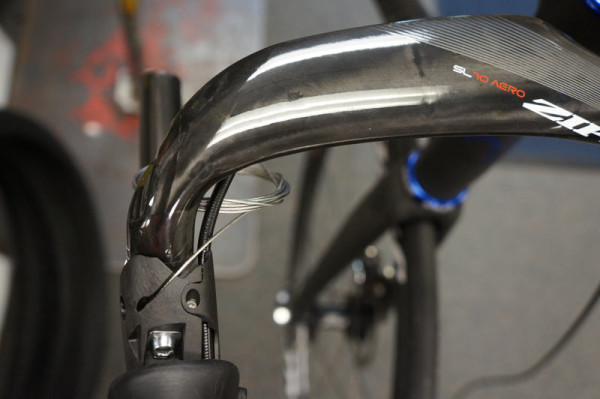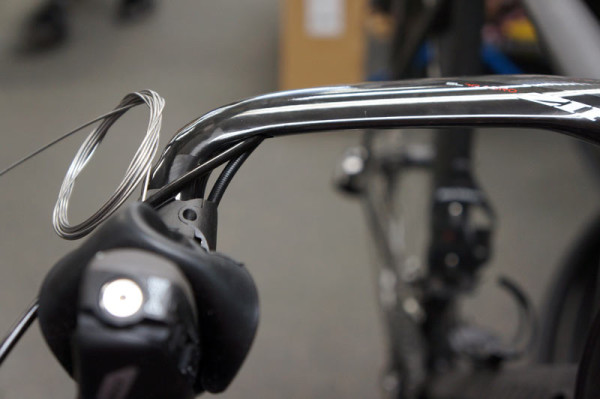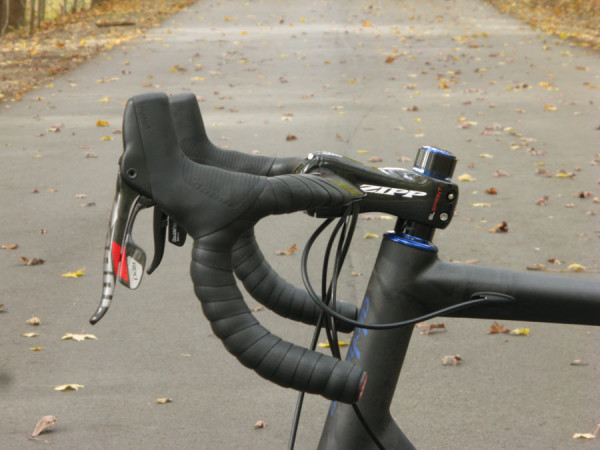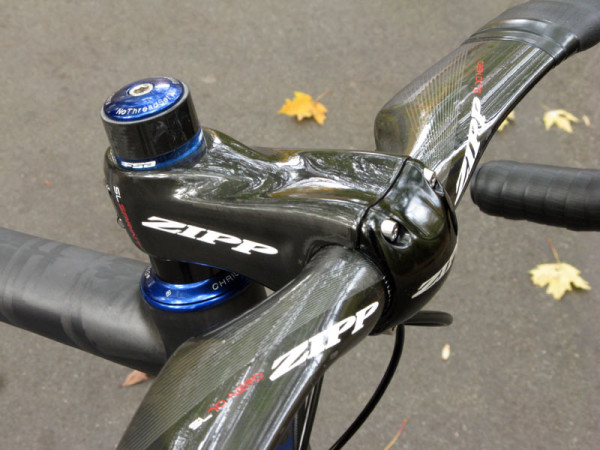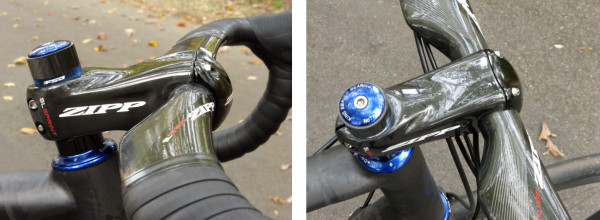Over the past couple of years, Zipp has reworked their handlebar shapes to accommodate just about any preference you may have, and their stem and seatpost line runs the gamut from oversized carbon to minimalist alloy. If you’re the type that likes to match their wheels to the rest of the bits on their bike, there are few other brands that offer the complete assortment as Zipp. While I don’t have their wheels yet, I do like having a matched cockpit. I’ve also become a fan of aero parts, so I pieced together the Zipp SL 70 Aero handlebar with their carbon SL Sprint stem and SL Speed seatpost.
Sure, the shape of a handlebar is a highly personal choice. But design quality, performance and easy of use are traits we can all appreciate. And once a properly stiff stem is in place, the weak spots in others becomes much more apparent. As for the seatpost, well, there were some limitations as to what I could feel with that one, but the technical pros and cons were readily apparent…
The SL 70 Aero handlebar is Zipp’s premium handlebar, combining the CFD-designed, drag minimizing wing shape along the flats from their Vuka TT series products with a flared, bent drop shape.
While a flat section like this could end up acting like a leaf spring, the UD carbon construction kept it stiff enough, but not so stiff that it transmitted all the little vibrations carbon is supposed to filter out. Zipp claims a 6.4watt savings (at 30mph) over a traditional round bar.
The upper is broad, which gives plenty of room for resting your hands when comfort overrides aero. The shape looks long, but it’s UCI 3:1 compliant.
The cable exit ports are huge, allowing everything to exit from one location as close to the center as is practical. Zipp calls out the ease of installation the bar provides, and as you’ll see, it lives up to the hype.
This angle doesn’t do it justice, but the lower drops flare slightly outward to allow wrist clearance when riding low, which improves ergonomics considerably. Just underneath the centerline are two ports for cable entry, which gives you options based on which component group you’re running.
The SL Speed stem is oversized, square and stiff and heck. The main body is all carbon with metal threaded inserts bonded in. The faceplate is alloy, and the bolts are stainless steel Torx T25. They come with grease preinstalled, which is the rough stuff you might notice around the bolt holes…it’s not shoddy carbon workmanship.
The seatpost is what it is, so I’ll go ahead and wrap that one up here. My Alchemy road frame is on the very tall side, which means not much post extends out of the frame. In hindsight, I should have had them build the frame a bit lower, but c’est la vie…it still rides amazing. So, if the post is able to soak up some small bumps, I’m not getting it on this bike. The pros are that the clamping mechanism is rock solid and by using two bolts, it’s micro adjustable. The downside is that the forward bolt is a pain in the butt to access on the 20mm offset version tested, particularly with a small multi-tool (such as you might have with you on a ride), so mid-ride adjustments while you’re getting acquainted won’t be fun. But, once you get it set, the seat won’t budge. And if you get the 0mm offset SL Speed post, the bolts are far easier to get to. The stock clamps work with both round and oblong metal and carbon saddle rails.
Weights are:
- SL Speed seatpost – 202g (31.6 / 330mm)
- SL Sprint stem – 163g (100mm)
- SL 70 Aero handlebar – 257g (42cm C-to-C)
INSTALLATION
Since Zipp is owned by SRAM, it only makes sense the cable ports on the bar would line up with SRAM’s shifters, and they do. Here, the port on the outside of the handlebar goes unused…
…and both brake and shifter hose/cable run through the front port. There’s plenty of room for both to slide in easily, but not so much that things rattle around (and, they’re wrapped with tape anyway). I started with the hydraulic brake hose, disconnecting it from the caliper and feeding it into the bar through the entry port first, then watched in joy as it found its own way out of the exit port quickly and easily.
Next, I fed the cable through until it popped out the exit, checked to make sure it hadn’t somehow wrapped around the brake hose, then slid the housing over it to it’d be guided out to the shifter. Compared to another internally routed handlebar I’d sweated, cursed and screamed over, this one was a pleasure to install. Even without that other experience, I wouldn’t have anything bad to say about the process…it just went together easily.
On the left, with just the brake hose installed. On the right, another view of both cable and hose entering behind the shifter.
RIDE REVIEW
Zipp shaped the bar with 70mm reach and a 10º ramp angle so that shifter hoods would end up creating a level transition for your hands to rest on. It worked. That, plus the wide aero section across the top, opens up all manner of hand positions. Another nice feature is there’s enough room left on either side of the stem for a cycling computer mount, something not every aero bar has. It’s not rated for aero extensions, though.
Down in the drops, there’s enough give to absorb small bumps, but they’re stiff enough there and in the hoods to throw the bike around in a sprint. Which leads to the stem…
The SL Sprint stem was designed to have the best stiffness-to-weight ratio of any stem on the market. I haven’t tried its main competitors (like the boxy Shimano PRO and FSA’s new stems), but I will say this stem is monstrously stiff. It connects the handlebar to the frame and fork like nothing I’ve felt before. Granted, I usually lean toward lighterweight stems, but even the Ritchey C260 stems are no slouch. This one just takes it to another level, which provides an enlightening connection between rider and bike. I grab the bars and lean and the bike sways, which provides better feedback in a sprint or even when just standing to climb.
The great thing is, that torsional stiffness doesn’t come at the expense of good looks or added weight. The rounded rear clamping section is also very knee friendly.
The complete package goes well together, aesthetically and functionally. We don’t have the means to test aerodynamic claims, but having ridden plenty of aero and non-aero bikes, the little touches do seem to add up even if you’re not cruising along at 30mph. The Zipp SL Aero/Sprint/Speed cockpit lives up to its hype.
